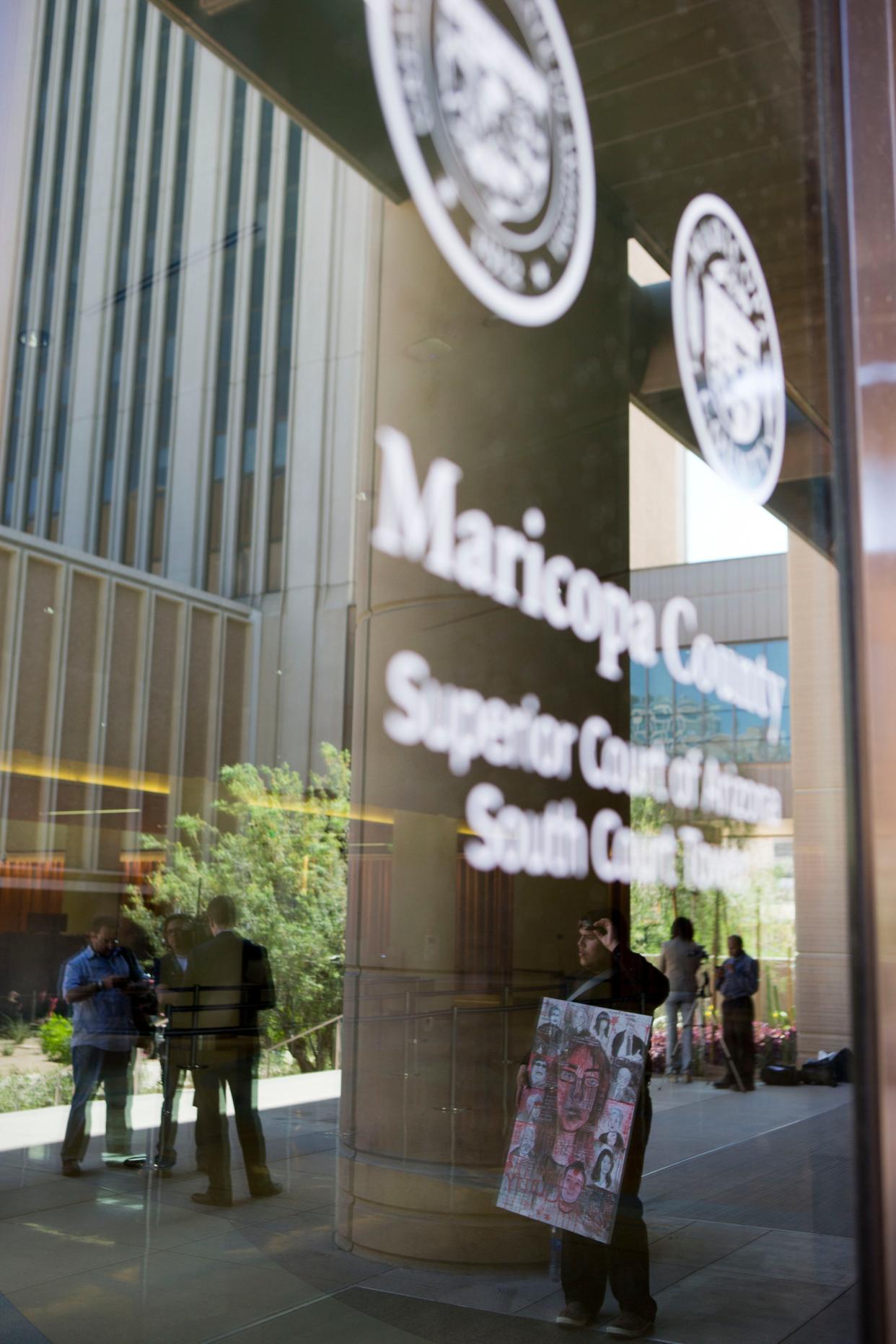Voters booted 3 Arizona judges. Shouldn't we know more why they deserved it?

The most stunning surprise in the Nov. 8 election occurred way down ballot, where voters gave three Maricopa County judges the boot.
What are we to make of it?
For one, that surveys of attorneys, jurors and witnesses about judges’ performances are more important than we realized. And that judges have been put on notice that their temperament could cost them their jobs.
But the election results also suggest that the votes an independent commission takes, using the surveys as a basis, on whether judges meet standards or not may carry more weight with voters than intended (more on that in a moment).
And that the performance-review process itself could use greater transparency and explanation.
All 3 had issues with their temperament
It’s not hyperbolic to describe the ouster of three Superior Court judges as historic. Heading into this year’s election, Arizona voters had removed only three judges under the retention system, two of them in 1978 when the system first went into effect.
In fact, judges who got an overall thumbs down or multiple “do not meet standards” votes from the Commission on Judicial Performance Review in previous years survived their retention elections just fine.
This cycle, the commission deemed one judge, Stephen Hopkins, as unfit for the bench. He lost, but so did Judges Howard Sukenic and Rusty Crandell, who both received more “meet standards” than “do not meet standards” votes. In Crandell’s case, he got a nod from 18 of the 20 commissioners who voted.
Election fallout:Assistant AG criticized Maricopa County before polls closed
In all three instances, the judges earned lower ratings than their colleagues on their “temperament,” one of five categories in the survey. Specifically, judges’ temperament is measured by survey responses on whether they’re understanding and compassionate, dignified, courteous, patient and whether their conduct “promotes confidence in the court.”
It’s worth noting that a fraction of the lawyers, litigants and jurors who receive the surveys complete and return them.
Numerical ratings don't offer helpful specifics
Beyond those metrics, it's difficult to discern the basis for the commissioners’ “no” votes.
Comments from the surveys and discussions commissioners have with judges and among themselves aren’t divulged. The commission is restricted on what it can disclose, so there no summary or details explaining the votes that are used to guide voters.
Which is fine when even judges whom the commission had found to be unfit won retention anyway. It’s another when a couple of “no” votes proves to be career-ending.
The chair of the Judicial Performance Review commission, Mike Hellon, said he believes the process is having the intended effect, although he notes that the percentage of “no” votes cast by commissioners is not necessarily proportionate to those by voters.
That is, a judge who receives one or two “no” votes from commissioners may win a retention election by a similar margin as one who gets four or five “no” votes.
Why did voters boot Rusty Crandell?
But even Hellon acknowledges that the case of Crandell, who got only two “no” votes but lost retention nonetheless, will likely prompt the commission to have a discussion.
(Hopkins’ ouster is more readily apparent. He was reprimanded in 2020 by another independent panel, the Commission on Judicial Conduct, over a pattern of rudeness toward attorneys and defendants. This after both a prosecutor and a defense attorney submitted complaints about his treatment of people in court.)
There are suggestions that Crandell may have been the target of special-interest groups, as was the case of state Supreme Court Justices Clint Bolick and John Pelander in 2018 over a ruling to toss a tax-the-rich education funding measure off the ballot. Both won retention.
There’s no evidence of no such effort against Crandell, however.
Activists add uncertainty to retention
Concerns of activist campaigns only makes “no” votes by the Commission on Judicial Performance Review more substantial. Bolick and Pelander had near-perfect ratings on the surveys and unanimous support from commissioners. Justice Bill Montgomery received two “do not meet standards” votes this year and was also targeted by a grassroots campaign.
Montgomery survived at the polls, by only a 10% margin. In Maricopa County, where he had served as county attorney, he actually lost by a couple of percentage points.
Commissioners might bristle at the suggestion that “no” votes have an outsize impact on retention election results. Hellon notes that efforts in recent years to better publicize the commission’s work have paid off, including having the judges’ ratings moved to the front of the voters guide.
“In recent elections, we’re seeing one ’no’ vote has about 2, 3 or 4 percentage points” effect at the polls, he said. “More people are paying attention now.”
Some voter (in)actions have unintended effects
That may be so, but part of the outsize effect is baked in because of a couple of other factors involving voters.
A large swath of voters who turn out to vote simply ignore the section on judges’ retention. The judges’ races are left blank on 40% or more of ballots in Maricopa County ? the percentage was even higher before a "Finish the ballot" campaign in recent years.
And another 20% to 25% of voters who do fill in the judges races routinely vote against retention on every judge, regardless of their ratings from surveys and the commission.
The “no” votes of commissioners make the fate of judges more precarious than ever.
Which makes greater explanation about the commissioners’ reasoning all the more essential.
Reach Abe Kwok at [email protected]. On Twitter: @abekwok.
This article originally appeared on Arizona Republic: Arizona judges were booted. Shouldn't we know why they deserved it?
